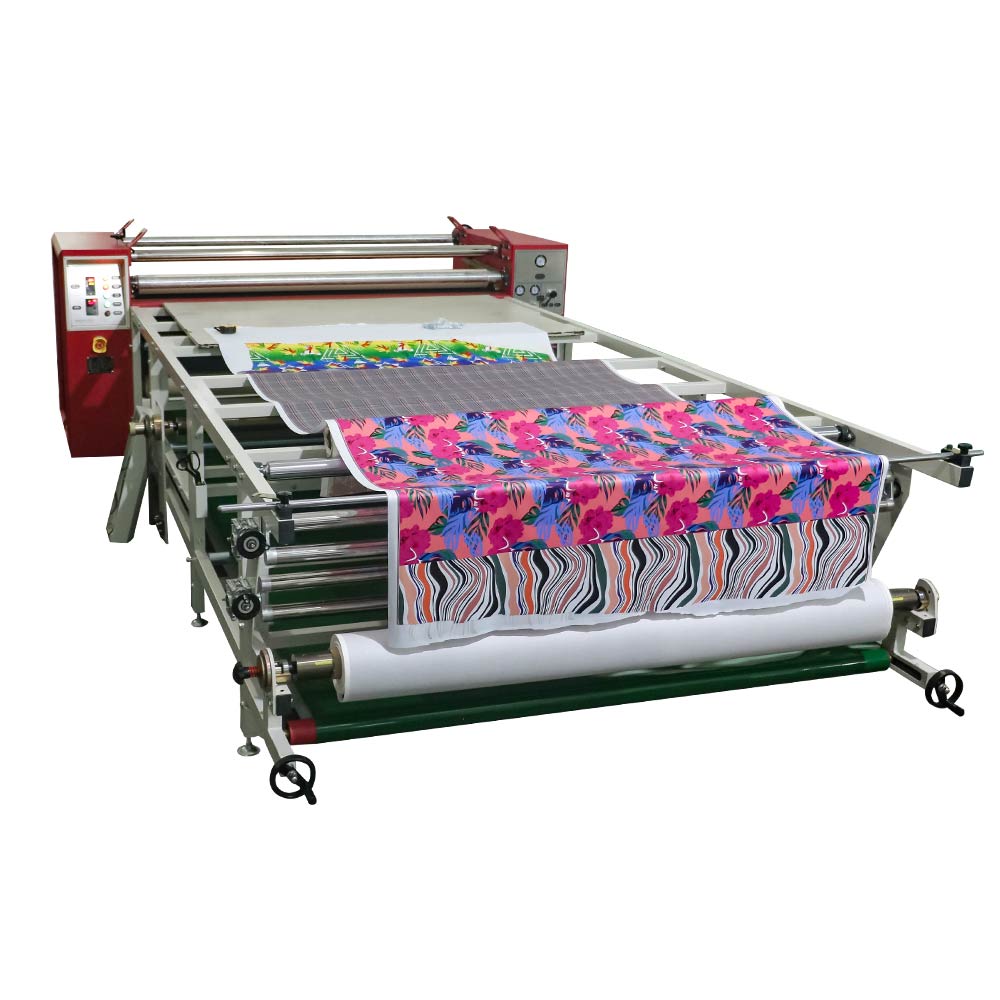The Roller Printing Machine operates on a fascinating and intricate process, widely used in textile industries for high-volume fabric printing. This sophisticated machine employs a combination of mechanical and chemical techniques to transfer intricate designs onto fabric surfaces.
1. Design Preparation:
The process begins with the creation or selection of the design to be printed. This design is engraved onto a cylindrical metal roller. The roller typically has the negative of the desired pattern etched onto its surface. These rollers are meticulously crafted, ensuring precision in design replication.
2. Ink Application:
Fabric rolls are fed into the machine, passing under the engraved roller. As the fabric moves forward, a trough filled with thick, paste-like ink is positioned against the roller. The roller rotates, picking up the ink from the trough, and as the fabric passes underneath, the ink is transferred onto the textile.
3. Pressure and Heat:
Pressure is a crucial element in the process. The fabric is pressed between the inked roller and a counter-roller, ensuring uniform transfer of the ink. In some advanced models, heat may be applied, aiding in the fixation process. The combination of pressure and, if necessary, heat, ensures the ink adheres firmly to the fabric fibers.
4. Drying and Fixation:
Once the fabric passes through the rollers, it moves on to a drying section. Here, the printed fabric is subjected to hot air or other drying methods, evaporating the moisture from the ink. Additionally, the heat assists in setting the ink into the fabric, making the print permanent and colorfast.
5. Cleaning and Repeating:
After printing, the rollers need to be thoroughly cleaned to remove any residual ink. This meticulous cleaning ensures the next set of prints is pristine and accurate. The process is repeated for continuous printing, allowing for large-scale production of intricately designed textiles.

In summary, the Roller Printing Machine operates by transferring ink from an engraved cylindrical roller to fabric through pressure and, if necessary, heat. This method allows for the precise and efficient reproduction of intricate designs on textiles, making it a fundamental technology in the textile industry.